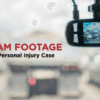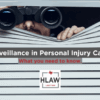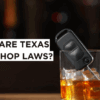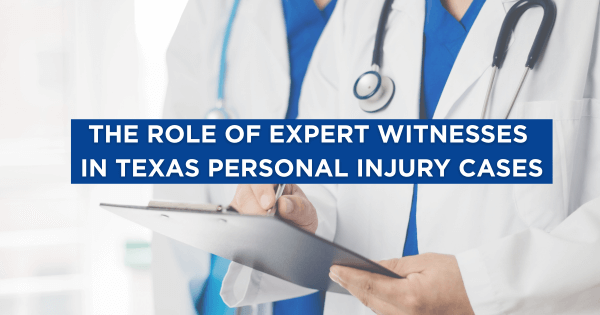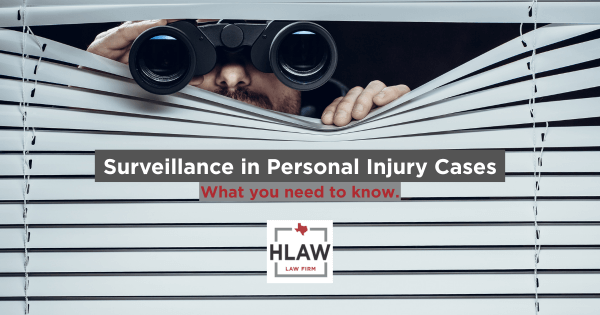Dashcams are everywhere now—from commuters on I-35W to rideshare drivers on West 7th in Fort Worth, Texas. When a crash happens, those few seconds of video can be the difference between a strong claim and a tough fight. Below is a practical, Texas-specific guide to using dashcam footage the right way: is it legal to record, how courts admit it, how to preserve it so it actually holds up, and how we present it to insurers and juries.
Is it legal to use a dashcam in Texas?
Recording is generally legal. Texas is a “one-party consent” state for recording conversations. If you are a party to the conversation (or one party consents), audio recording is lawful. Texas Penal Code §16.02 and related guidance confirm one-party consent, and Texas also provides a civil cause of action against illegal interceptions in Chapter 123 of the Civil Practice & Remedies Code.
Mind the windshield. Texas restricts objects or materials on the windshield that obstruct the driver’s view. If your dashcam (or its mount, cord, or stickers) materially obstructs your view, that can be a traffic offense—and in a lawsuit, the defense may argue the placement contributed to the crash. See Transportation Code §547.613 (Restrictions on Windows).
Privacy pitfalls. Audio of passengers is usually fine if you’re in the conversation, but secretly recording other people’s private conversations can trigger criminal and civil liability. (There’s a private civil cause of action for unlawful interception, with statutory damages, under CPRC §123.002.)
When is dashcam footage admissible in a Texas court?
Texas courts admit dashcam video under the ordinary Rules of Evidence—no special “tech rules” required. We focus on four pillars: relevance, authentication, best-evidence, and hearsay.
- Relevance (Rules 401–403). The clip must make a disputed fact more or less probable (e.g., who had the green light) and its probative value can’t be substantially outweighed by risk of unfair prejudice or confusion.
- Authentication (Rule 901). You must show the video “is what you claim it is.” You can do this with:
- Witness testimony (you installed the dashcam; the location/time look right).
- Distinctive characteristics/metadata (device model, GPS/time stamps, file path).
- Evidence about a process or system showing the camera reliably records (Rule 901(b)(9)). Texas courts accept the “silent-witness” theory for video—no eyewitness to the events is required if the system’s reliability is proved.
- Helpful Texas cases:
- Fowler v. State—Court of Criminal Appeals discussed authenticating store surveillance video under Rule 901;
- Tienda v. State—Texas’s leading case on authenticating digital evidence based on circumstantial markers; the same logic applies in civil cases.
- Best-evidence rules (Rules 1001–1004). Courts treat “photographs” to include video in any form. For electronically stored information, an “original” includes any accurate printout or visual output; duplicates are generally admissible unless authenticity is reasonably questioned.
- Hearsay (Rules 801–803). The video itself isn’t hearsay. But spoken words captured on the audio track can be. Common paths around hearsay:
- Opposing party’s statements (801(e)(2))—admissible when offered against them.
- Business records (803(6))—often useful for commercial fleet cams with automated logging and custodian affidavits (Rule 902(10)).
Preservation: how to keep your dashcam clip admissible (and avoid spoliation)
Once a crash happens—and certainly once a claim is reasonably anticipated—you have a duty to preserve relevant evidence. Texas’s spoliation doctrine (from Brookshire Brothers, Ltd. v. Aldridge) allows courts to impose sanctions or adverse inferences if evidence is lost or altered.
Our recommended preservation protocol (do these immediately):
- Secure the source media. Remove the SD/microSD card and write-protect it (use a lockable adapter). Don’t keep recording over it. Make two verified, read-only copies.
- Hash the files. Create SHA-256 hashes for the original and each copy; record them in a simple chain-of-custody log (who handled what, when, and where). Courts respond well to this discipline even in civil cases.
- Keep it native. Preserve the native file(s) with the original metadata (timestamp, GPS, device info). Screenshots or re-exports may be fine for negotiation, but they’re secondary for court. The Rules of Evidence prefer the original or a faithful duplicate.
- Don’t edit. No cropping, filtering, speed-ups, or “compilations” in your working copy. If we later prepare a demonstrative clip, we’ll also offer the unedited original to avoid Rule 403 issues.
- Send preservation letters. If another driver, a trucking company, or a rideshare platform may have video (exterior cameras, dashcams, storefront cams), we send preservation letters right away to stop routine deletion. Brookshire teaches that the duty to preserve arises when litigation is reasonably anticipated.
Producing and obtaining dashcam video in discovery
Texas discovery has special rules for electronic data:
- Rule 196.4 (TRCP) governs ESI. The requesting party should specify the form (e.g., native .MP4 with metadata). The responding party must produce what’s reasonably available or object if the request is unduly burdensome; courts apply proportionality.
- For business-record dashcams (e.g., fleet systems), we often use a custodian affidavit under TRE 803(6) & 902(10), served at least 14 days before trial.
How we present dashcam evidence so it persuades
- Foundation first. We authenticate with either (a) a witness familiar with the device and scene, or (b) the “process/system” route under Rule 901(b)(9) with device specifications, settings, and integrity steps (hashes, chain-of-custody).
- Context matters. We prepare a timeline synced to key frames (light phases, speeds, distances) and, when helpful, pair it with intersection diagrams or event-data-recorder (EDR) readouts.
- Avoiding 403 traps. We show the full, unedited clip and supply a short demonstrative if needed. Providing full context reduces “misleading” objections.
- Audio strategy. If the audio includes the other driver’s admissions (“I never saw you”), those are typically non-hearsay as opposing-party statements (801(e)(2)). Statements from bystanders may require a hearsay exception—or we rely on the video and call the witness.
- Comparative fault defense. Be ready: if your camera placement arguably obstructed your view, the defense may argue negligence. Proper mounting (see §547.613) and clear testimony about line-of-sight help neutralize this.
Practical FAQs
Q: My dashcam overwrites footage every few hours. What now?
Pull the power, remove the card, and preserve immediately. If it is overwritten, ask us about subpoenas/preservation letters to nearby businesses, city traffic cams, or the other driver’s telematics/dashcam. Texas spoliation law rewards early, reasonable preservation efforts.
Q: Do I have to give the insurer my video right away?
We usually control the release until we’ve reviewed the liability and damages strategy. If we share early, we provide a faithful and accurate copy and preserve the original per the best-evidence rules.
Q: The clip has my passenger talking. Is that a problem?
Not usually. Texas is one-party consent; if you were a participant, the recording is lawful. If someone else’s private conversation was captured (and you were not a party), talk to us before sharing.
Q: Can the court reject my video because it’s a copy?
Not if it’s an accurate duplicate and authenticity isn’t in reasonable dispute (Rule 1003). If authenticity is challenged, we offer the original or explain why it’s unavailable under Rule 1004.
Bottom line
Dashcam footage can make your Texas car accident case—but only if it’s lawfully recorded, properly preserved, and cleanly authenticated. Our team at the HLAW law firm builds the evidentiary foundation from day one so insurers and juries see what really happened—clearly and credibly.
If you have dashcam video from a crash (or think someone else does), contact our office right away. We’ll lock down the evidence, send preservation letters, and put it to work for your case.
Key Texas Authorities (for readers who want to dig deeper)
- Recording & privacy: Texas Penal Code §16.02 (one-party consent); CPRC §123.002 (civil cause of action for unlawful interception).
- Windshield/placement: Transportation Code §547.613 (Restrictions on Windows).
- Admissibility & authentication: Texas Rules of Evidence 401, 403, 901, and Article X (Rules 1001–1004).
- Spoliation: Brookshire Brothers, Ltd. v. Aldridge, 438 S.W.3d 9 (Tex. 2014).
- Digital authentication in Texas: Fowler v. State, 544 S.W.3d 844 (Tex. Crim. App. 2018); Tienda v. State, 358 S.W.3d 633 (Tex. Crim. App. 2012).
- Discovery of electronic video files: Texas Rule of Civil Procedure 196.4 (ESI form/production; proportionality).
Have You Been in a Car or Truck Accident in Texas?
Dashcam footage can be a game-changer—but only if it’s preserved and presented correctly. If you’ve been injured in a car or truck accident, don’t wait. Insurance companies and defense attorneys will act fast to minimize your claim.
📞 Contact HLAW today for a free consultation. Our experienced personal injury attorneys will review your case, secure critical evidence like dashcam video, and fight to get you the compensation you deserve.
Your first call costs nothing—and it could make all the difference in your recovery.



